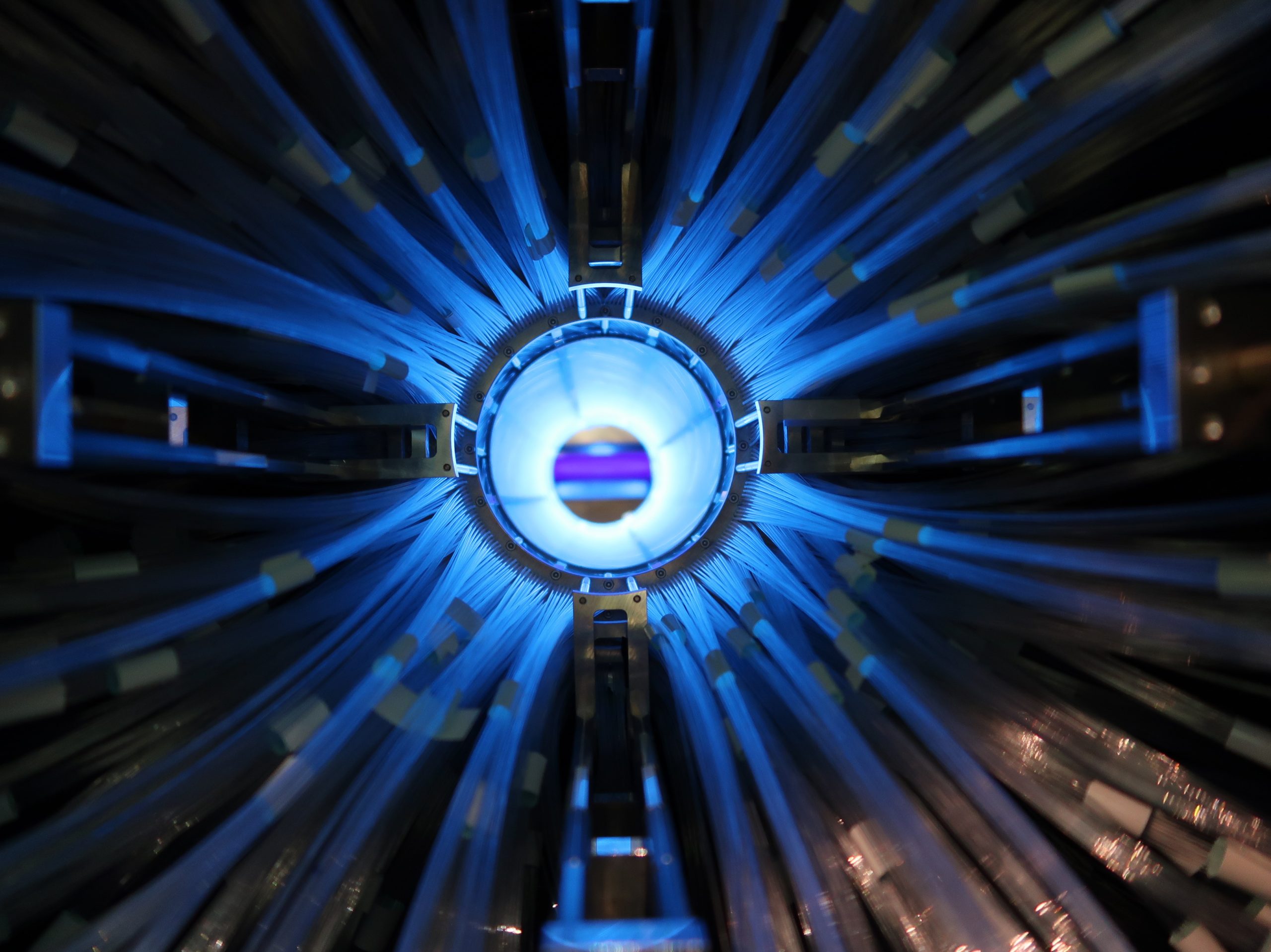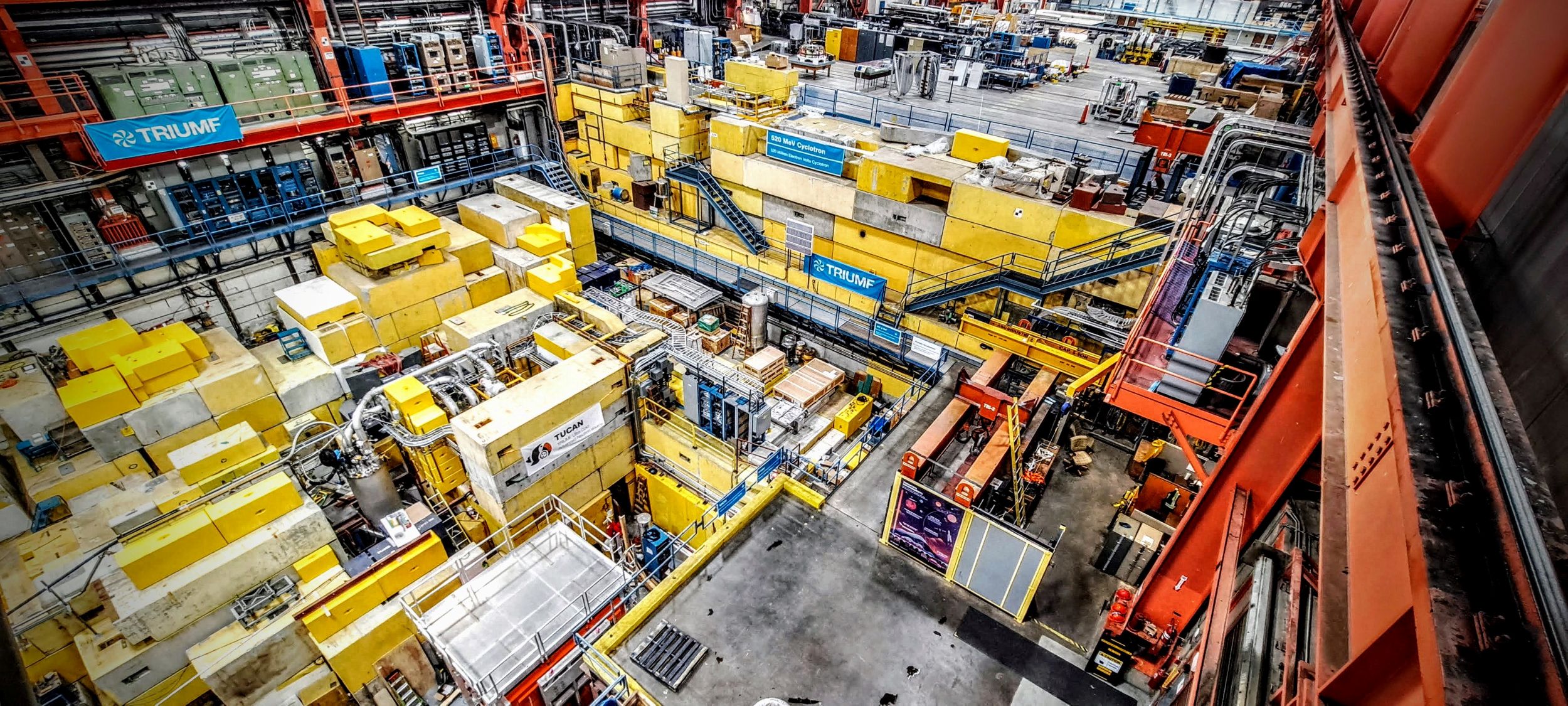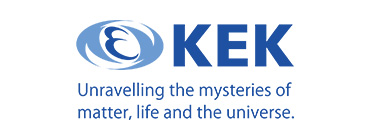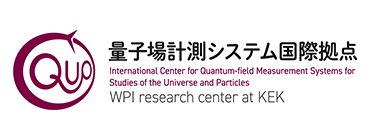- Topics
Ultracold Neutron Successfully Produced at TUCAN Experiment
July 7th, 2025
The TUCAN (TRIUMF Ultracold Advanced Neutron) collaboration, in which the Muon and Neutron Group of the Institute of Particle and Nuclear Studies (IPNS) at KEK joins, has successfully produced ultracold neutrons (UCNs) at TRIUMF, Canada’s national particle accelerator center. The helium cryostat developed at KEK has played a significant role in this success.
Although neutrons are electrically neutral particles, it is hypothesized that they may possess a slight internal separation of charge, creating a neutron electric dipole moment (EDM). A finite EDM in neutrons would be evidence of a violation of time-reversal symmetry. To observe the EDM, ultracold neutrons (UCNs) are used. UCNs are neutrons that have been cooled to extremely low energies—around 100 neV—so they possess very low kinetic energy. As a result, they can be confined within experimental containers. TUCAN aims to produce large quantities of UCN and measure the EDM to investigate possible violations of time-reversal symmetry.
To produce UCN, accelerated protons are directed onto a heavy metal target inducing a nuclear spallation reaction that breaks apart atomic nuclei and releases neutrons. These neutrons are then gradually cooled in several stages. In the final stage , the neutrons are sent into a superfluid helium at 1K (1K = −272.15 °C), where neutrons are cooled to ultra-cold temperatures suitable for experiments. However, the heat generated by the spallation reaction can increase the temperature of the superfluid helium, significantly reducing the efficiency of UCN production. To prevent this, a cryogenic system that continuously removes heat from the superfluid helium is essential.
IPNS-Muon and Neutron Group, along with the Cryogenics Group at the Instrumentation Technology Development Center, developed a custom cryogenic system. This system uses helium-3 to maintain the superfluid helium at 1K, enabling efficient and stable production of UCN.
-
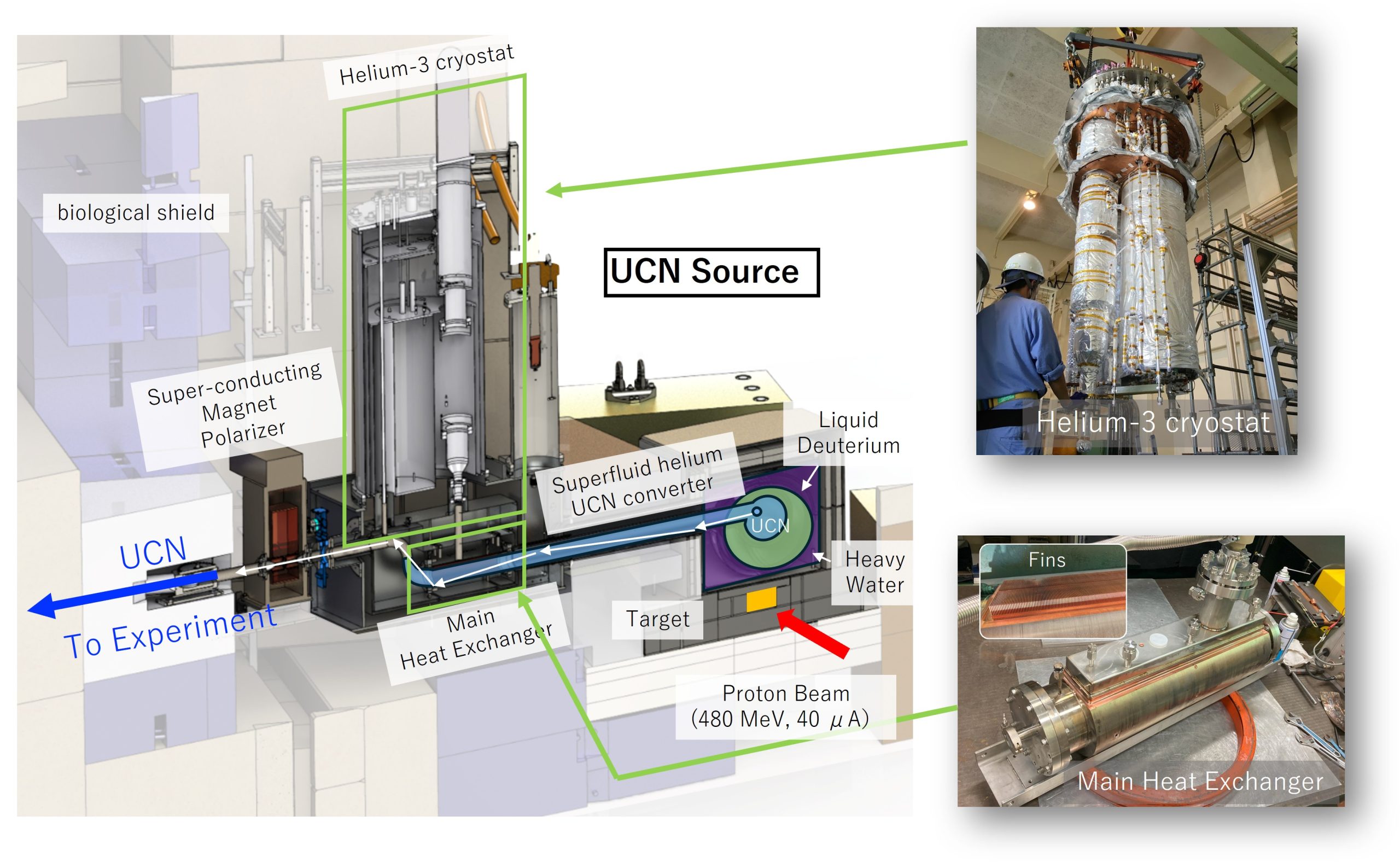
Overview of the experimental apparatus (top right photo) The helium cryogenic system developed at KEK and the main heat exchanger (bottom right photo). Photos by Shunsuke Kawasaki, associate professor, KEK-IPNS
-
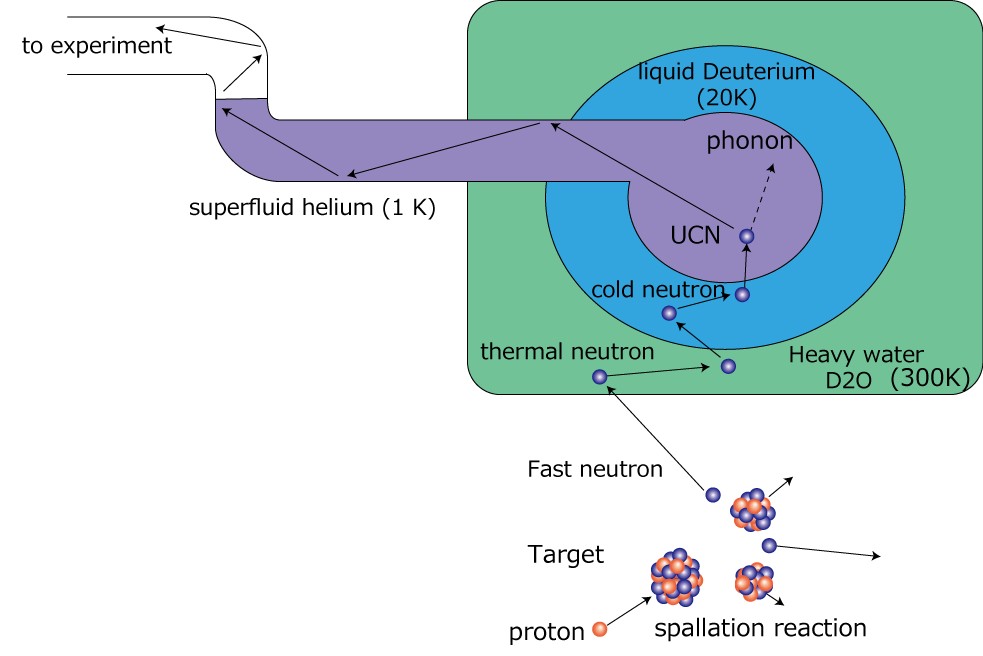
The process of UCN production. Neutrons released from atomic nuclei through the spallation reaction are gradually cooled, eventually becoming UCN that move at extremely low speeds—around 5 m/s—using superfluid liquid helium at 1 K. The helium-3 cryogenic system developed by KEK is used to continuously cool the superfluid helium (purple in the figure) down to 1 K.
The helium cryogenic system was transported from KEK to TRIUMF in 2021 and installed in the experimental facility. In 2024, after conducting a final commissioning, the TUCAN collaboration attempted to produce UCN. However, this was unsuccessful due to contamination in the superfluid helium. These impurities absorb or scatter neutrons, preventing the extraction of UCN even if they are produced.
To resolve this, a helium purifier developed at KEK was used to remove the impurities from the superfluid helium. As a result, the experiment has now reached a stage where UCN production is possible.
Finally, on June 13th, UCN production was successfully achieved. The next step is the installation of a deuterium moderator, which efficiently slows down neutrons before UCN production. This is expected to increase the UCN yield by a factor of 25, making it the world’s most intense UCN source. This powerful UCN source will be used to carry out high-precision measurements of the EDM.
-
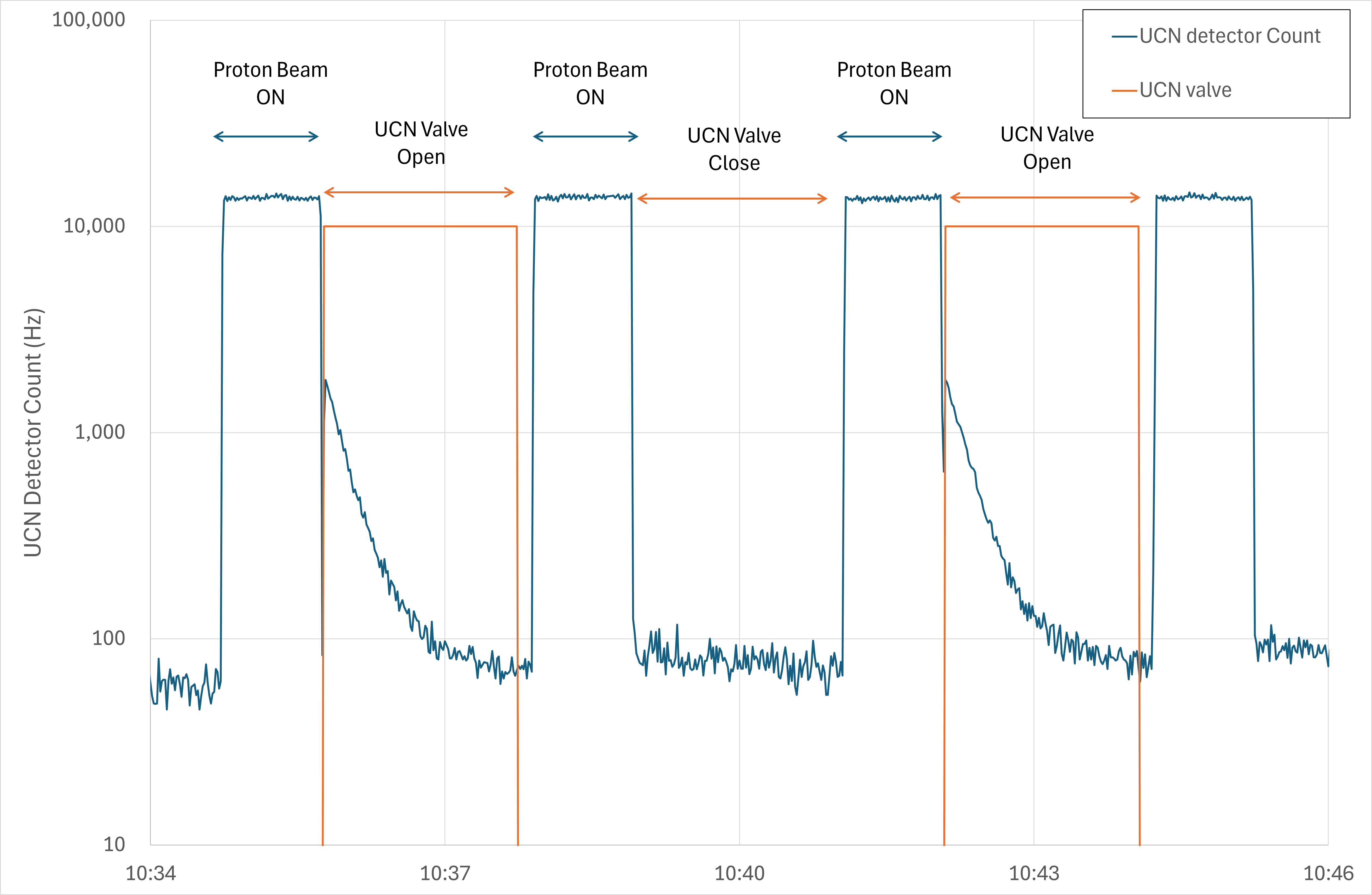
Response of the UCN detector. The blue line shows the number of neutrons detected by the UCN detector. UCNs are detected only when the valve to extract them from the production region is opened. During proton beam irradiation, the detector also responds to gamma rays and fast neutrons produced in the surrounding area.
We received a comment from Associate Professor Shinsuke Kawasaki of IPNS, who serves as co-spokesperson for the TUCAN collaboration: “I’m deeply moved by the successful production of UCN. The current sensitivity of EDM measurements is limited by the number of UCN available (i.e., statistical precision). That’s why the TUCAN collaboration has been focused on developing a high-intensity UCN source. In that sense, the successful generation of UCN marks a major milestone.
The unsuccessful UCN production in November last year was a shocking setback for the collaboration. However, through significant effort to identify and address the root cause, we were able to achieve success this time.
Even during this beam operation time, just before UCN production, we encountered a serious issue —a vacuum leak in the proton beamline, which forced a beam shutdown. But thanks to the tireless efforts of the TRIUMF beamline group, who worked through the holidays, the problem was resolved.
This success is the result of outstanding collaboration—not only among TUCAN collaborators, but also with the dedicated staff at TRIUMF, and many others including KEK Instrumentation Technology Development Center and Mechanical Engineering Center.
Our next major milestone is the installation of the deuterium moderator. Once installed, our UCN source will become 25 times more intense, making it the most powerful UCN source in the world. With this world-leading source, we will push forward in our ultimate goal: to explore the EDM.”

